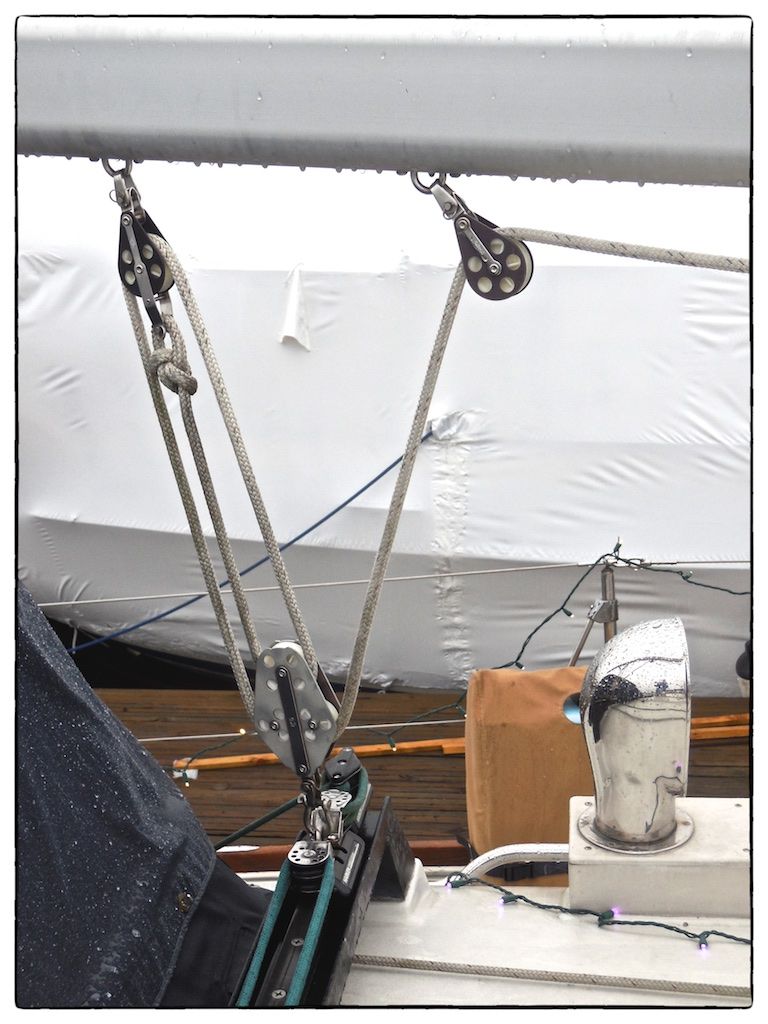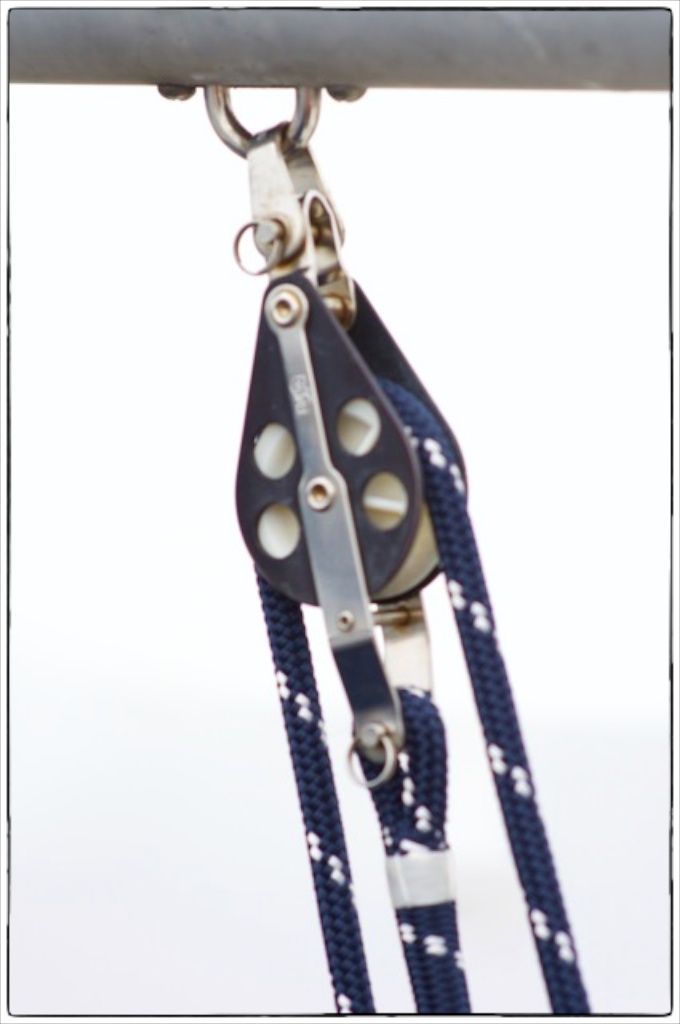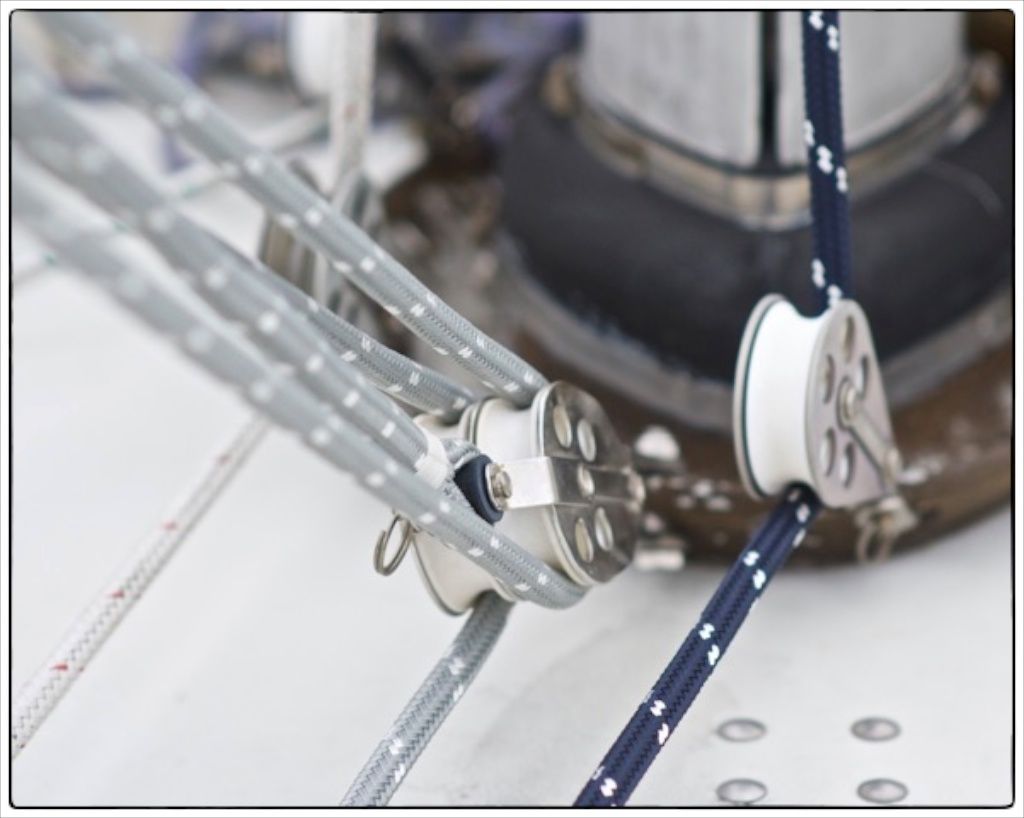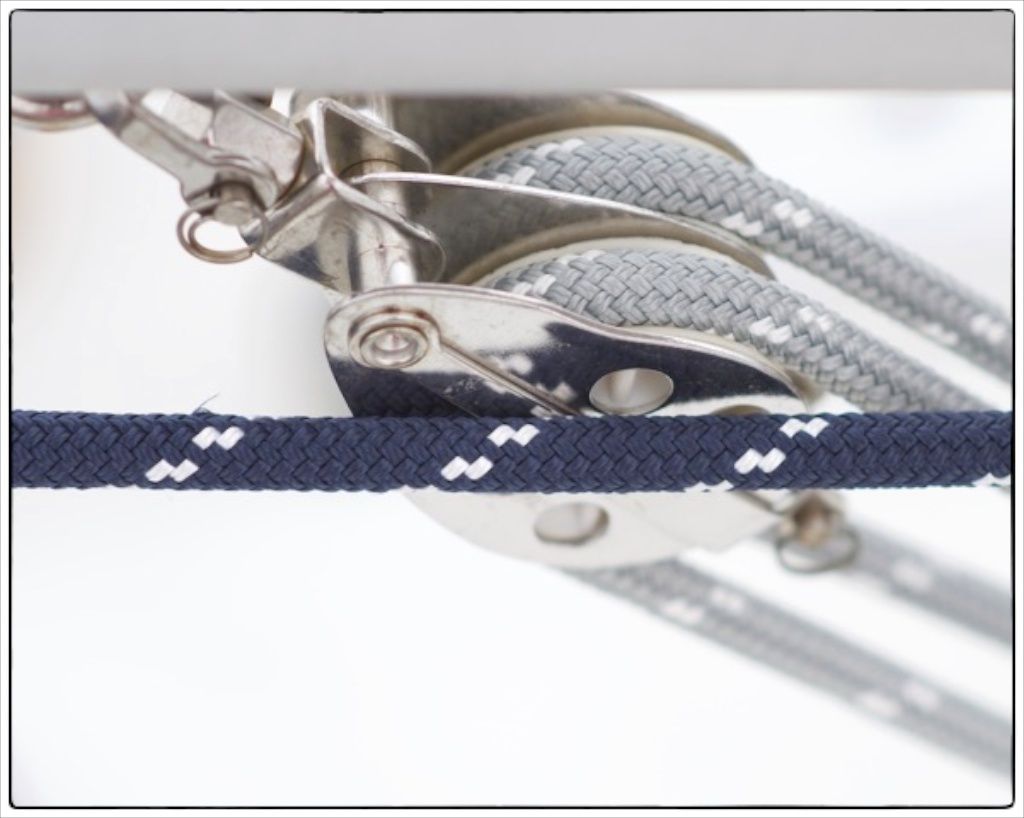Leading Lines Aft - Part 2
--Blogpost written by Bob
As a continuation of our blogpost entitled Leading Lines Aft, this blogpost covers two new lines we recently installed on a relatively warm day during the winter. Both the mainsheet and boom vang control line are new. I ordered the rope in the new colors with eye splices included from Annapolis Performance Sailing--they are all double braid polyester construction.
Main Sheet
The mainsheet controls the trim and the position (in conjunction with the mainsheet traveler control lines) of the mainsail. Adjustments to the mainsheet are frequently made while sailing.
The old main sheet was led aft though the deck organizer, a single turning block, and to a self-tailing winch. When I replaced this line two years ago, I used a line that was too large, 9/16-inch diameter, and it doesn't work well with the existing self-tailing winch nor the turning block. So, I decided to change this line back to 7/16-inch diameter, it's original size, and have an eye splice installed on one end for a proper junction with the starting sheave.
 |
| The old main sheet was fastened to the sheave with a bowline knot. |
 |
| The new main sheet is 7/16-inch diameter double braid polyester in navy with a white fleck. Note the eye splice where the line is fastened to the sheave. |
Boom Vang
A boom vang is used to pull down the boom for off-wind points of sail when the wind in the mainsail would tend to lift the boom. Proper use of a boom vang helps keep the boom down, the mainsail full, and working as an efficient airfoil. Adjustments to the boom vang are made less frequently than to the mainsheet while sailing.
The old boom vang terminated at a cam cleat on a sheave near the boom attachment, requiring one of us (meaning me) to go forward to make adjustments.
 |
| The old boom vang (blue line) is shown above. This arrangement required that we adjust the boom vang from the cabin top. |
The old boom vang hardware was 30+ years old and looked pretty weathered. In addition, one snap shackle was fastened to an eye on the underside of the boom and I couldn't open the snap shackle (even using large vise grip pliers) to remove it. I think the pin that locks the snap shackle was bent. I had to cut this off with a portable grinder.
 |
| We picked up two used twin-sheave blocks at Bacon's to use for the boom vang. At $20 each, it was a great deal for stainless steel sheaves. The new line for the boom vang is gray with a while fleck. |
A lot of sailors have switched to rigid boom vangs and seem to love them. We decided to keep the old tried and true boom vang for now at least.
Summary
One small problem remains in that the mainsheet contacts the upper sheave of the boom vang--I'm concerned about chafe at this point.
 |
| I have to figure out a solution to this chafe-prone area where the main sheet (navy with white fleck) line contacts the outside of the upper sheave of the boom vang. |
We have to upgrade the deck organizer to a 6-sheave unit and add two more rope clutches (already purchased). After our new sails are installed in a couple weeks, we will install a new topping lift. The final step of this series will be adding the new mainsail reefing lines.
Thanks for following our blog!
Hi Robert,
ReplyDeleteI noticed in the pic above that you have changed out your main traveler gear from the original. Mine (still original) is shot and I'm wondering what brand and model of traveler gear you used? Was it an easy upgrade?
Thanks
Andrew
I teplaced my main sheet traveler with a Harken system and in order to make it work with the existing structure I had to use two tracks--one above the other. Otherwise the existing structure would interfere with the movent of the new Harken cars.
Delete